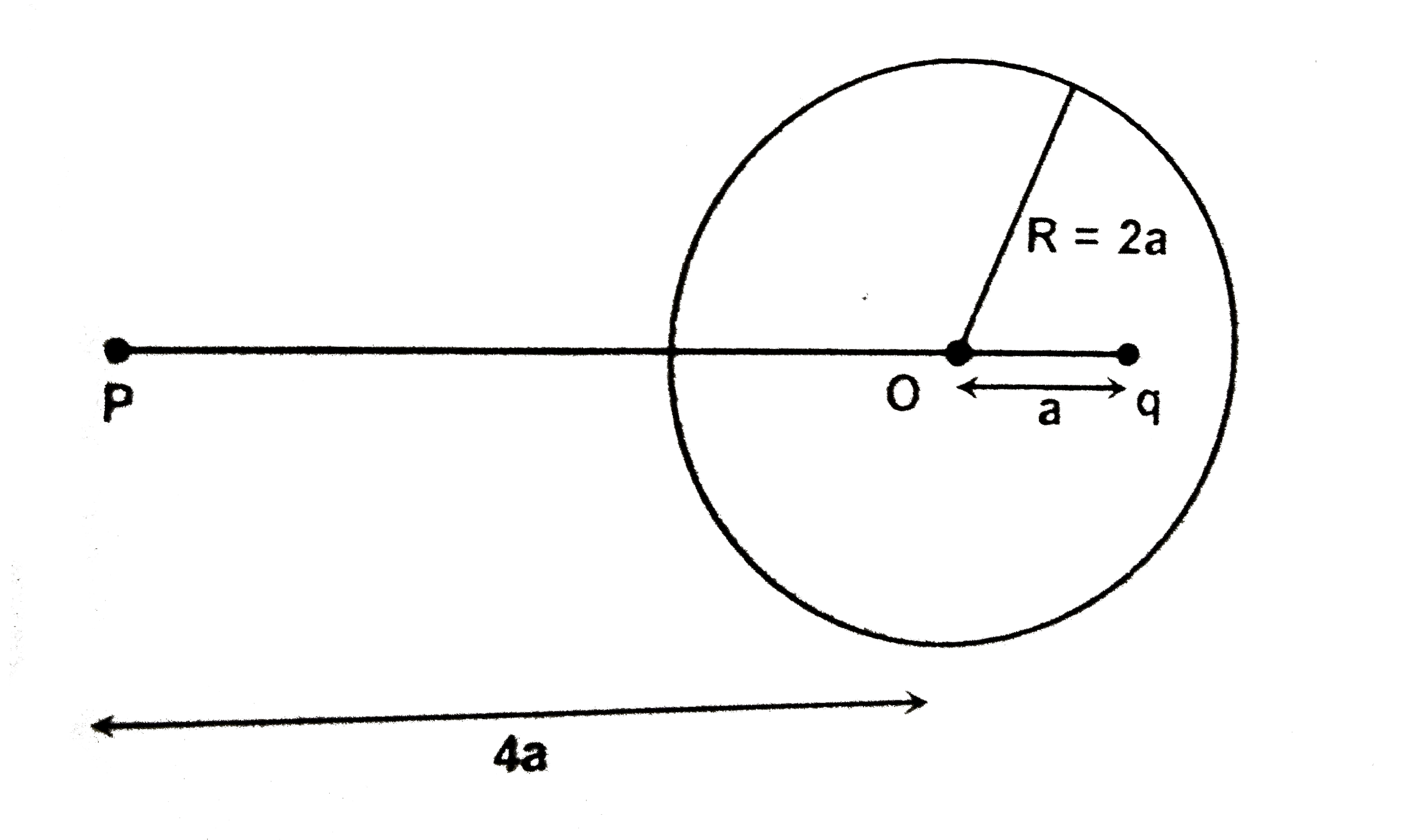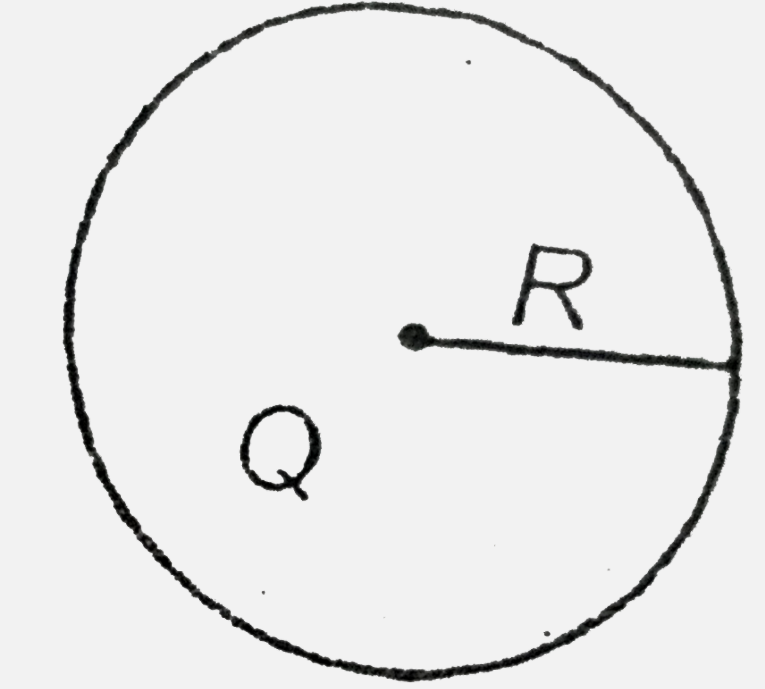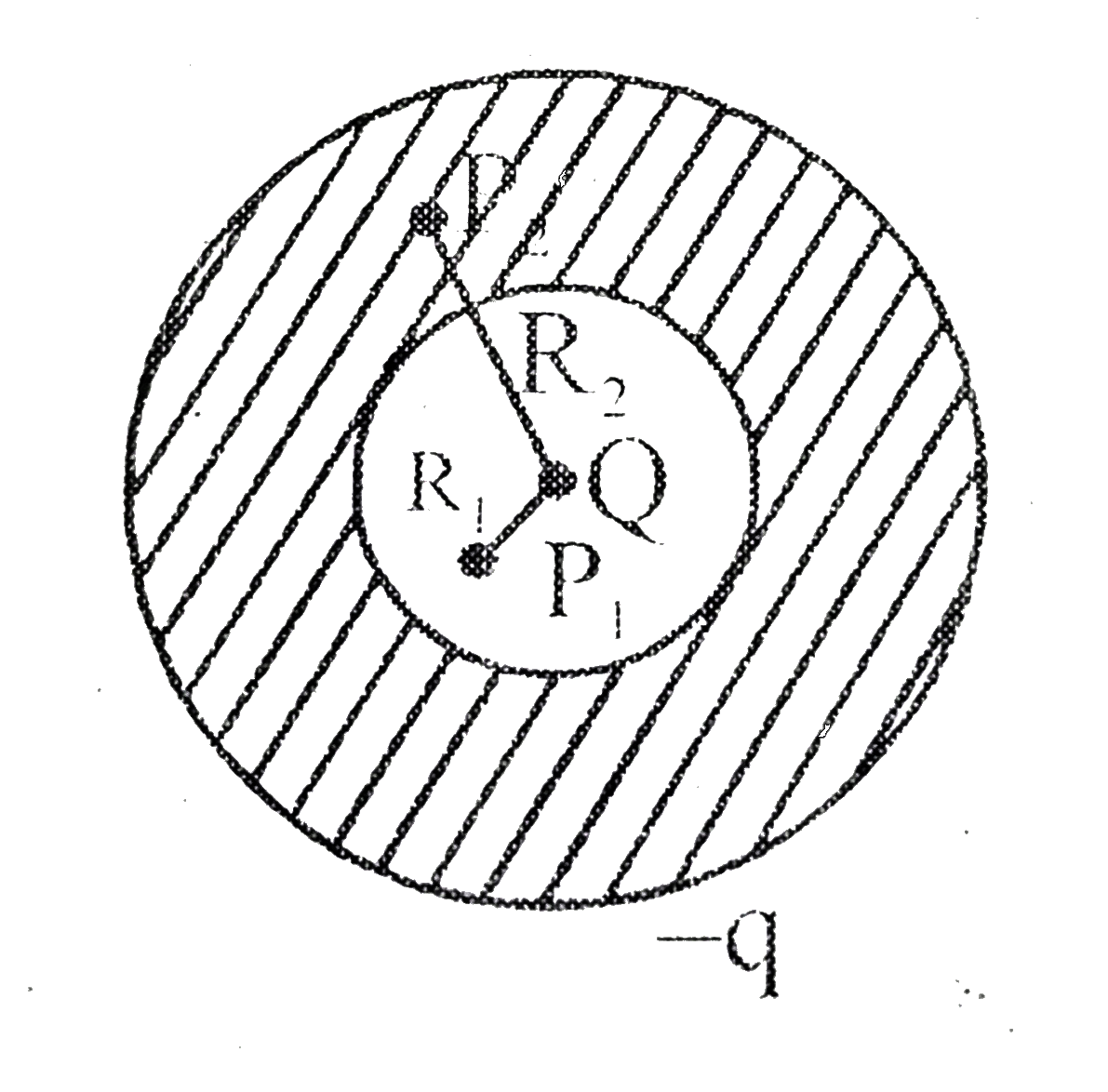A thin spherical conducting shell of radius R has a charge q. Another charge Q is placed at the centre of the shell. The electrostatic potential at a point P a distance R2 from the centre of the shell is
a) (q+Q)4πε02R
b) 2Q4πε0R
c) 2Q4πε0R−2q4πε0R
d)2Q4πε0R+q4πε0R
The correct Answer is:D
To solve the problem, we need to find the electrostatic potential at a point P located at a distance R2 from the center of a thin spherical conducting shell of radius R that has a charge q, with another charge Q placed at the center of the shell.
1. Understanding the System:
- We have a spherical conducting shell with radius R and charge q.
- There is a point charge Q located at the center of this shell.
- We need to find the electrostatic potential at point P, which is at a distance R2 from the center.
2. Electrostatic Potential Due to the Conducting Shell:
- Inside a conducting shell, the electric field is zero. Therefore, the potential inside the shell is constant and equal to the potential on the surface of the shell.
- The potential V1 due to the charge q on the shell at the surface (radius R) is given by:
V1=q4πϵ0R
- Since the electric field inside the shell is zero, this potential remains the same at any point inside the shell, including point P.
3. Electrostatic Potential Due to the Central Charge Q:
- The potential V2 due to the point charge Q at a distance R2 from the center is given by:
V2=Q4πϵ0(R2)=2Q4πϵ0R=Q2πϵ0R
4. Total Electrostatic Potential at Point P:
- The total electrostatic potential V at point P is the sum of the potentials due to the conducting shell and the central charge:
V=V1+V2=q4πϵ0R+Q2πϵ0R
- To combine these, we can express V2 with a common denominator:
V=q4πϵ0R+2Q4πϵ0R=q+2Q4πϵ0R
5. Final Answer:
- Therefore, the electrostatic potential at point P is:
V=q+2Q4πϵ0R
- We have a spherical conducting shell with radius R and charge q.
- There is a point charge Q located at the center of this shell.
- We need to find the electrostatic potential at point P, which is at a distance R2 from the center.
- Inside a conducting shell, the electric field is zero. Therefore, the potential inside the shell is constant and equal to the potential on the surface of the shell.
- The potential V1 due to the charge q on the shell at the surface (radius R) is given by:
V1=q4πϵ0R
- Since the electric field inside the shell is zero, this potential remains the same at any point inside the shell, including point P.
- The potential V2 due to the point charge Q at a distance R2 from the center is given by:
V2=Q4πϵ0(R2)=2Q4πϵ0R=Q2πϵ0R
- The total electrostatic potential V at point P is the sum of the potentials due to the conducting shell and the central charge:
V=V1+V2=q4πϵ0R+Q2πϵ0R
- To combine these, we can express V2 with a common denominator:
V=q4πϵ0R+2Q4πϵ0R=q+2Q4πϵ0R
- Therefore, the electrostatic potential at point P is:
V=q+2Q4πϵ0R
Topper's Solved these Questions
- ELECTROSTATIC POTENTIAL AND CAPACITORSBook:DC PANDEY ENGLISHChapter:ELECTROSTATIC POTENTIAL AND CAPACITORSExercise:(B) Chapter exercises
Explore 17 Videos
- ELECTROSTATIC POTENTIAL AND CAPACITORSBook:DC PANDEY ENGLISHChapter:ELECTROSTATIC POTENTIAL AND CAPACITORSExercise:(C) Chapter exercises
Explore 50 Videos
- ELECTROSTATIC POTENTIAL AND CAPACITORSBook:DC PANDEY ENGLISHChapter:ELECTROSTATIC POTENTIAL AND CAPACITORSExercise:Check point 2.5
Explore 20 Videos
- ELECTROMAGNETIC WAVESBook:DC PANDEY ENGLISHChapter:ELECTROMAGNETIC WAVESExercise:Sec C
Explore 22 Videos
- ELECTROSTATICSBook:DC PANDEY ENGLISHChapter:ELECTROSTATICSExercise:Medical entrances gallery
Explore 37 Videos
Similar Questions
A conducting shell of radius R carries charge–Q. A point charge +Q is placed at the centre of shell. The electric field E varies with distance r (from the centre of the shell) as :
View SolutionA conducting shell of radius R carries charge −Q. A point charge +Q is placed at the centre. The electric field E varies with distance r (from the centre of the shell) as
View Solution
A point charge q'q is placed at distance 'a' from the centre of an uncharged thin spherical conducting shell of radius R=2a. A point 'P' is located at a distance 4a from the centre of the conducting shell as shown. The electric potential due to induced charge on the inner surface of the conducting shell at point 'P' is
View SolutionA point charge Q is placed inside a conducting spherical shell of inner radius 3R and outer radius 5R at a distance R from the centre of the shell. The electric potential at the centre of the shell will be
View SolutionA metallic spherical shell of radius R has a charge -Q on it. A point charge +Q is placed at the centre of the shell. Which of the graphs shown below may correctly represent the variation of electric field E with distance r from the centre of shell ?
View SolutionInside a charged thin conducting shell of radius R, a point charge +Q is placed as shown in figure potential of shell may be

View SolutionA point charge Q is placed at the centre of a spherical conducting shell. A total charge of -q is placed on the shell. The magnitude of the electric field at point P1 at a distance R1 from the centre is X. The magnitude of the electric field due to induced charges at point P2 a distance R2 from the centre is Y. The values of X and Y are respectively.

View SolutionA spherical conducting shell of inner radius r1 and outer radius r2 has a charge Q.
(a) A charge q is placed at the center of the shell. What is the surface charge density on the inner and outer surfaces of the shell ?
(b) Is the electric field intensity inside a cavity (with no charge) zero, even if the shell is not spherical, but has any irregular shape ? Explain.
View SolutionA point charge q is placed inside a conducting spherical shell of inner radius 2R and outer radius 3R at a distance of R fro the centre of the shell. The electric potential at the centre of shell will (potential at infinity is zero).
View SolutionConsider a thin conducting shell of radius R carrying total charge Q. Two point charges Q and 2Q are placed on points A and B, which are at a distances of R2 and 2R from the center of the cell respectively as shown in the figure. If the cell is earthed how much charge will flow to the earth?
View Solution
